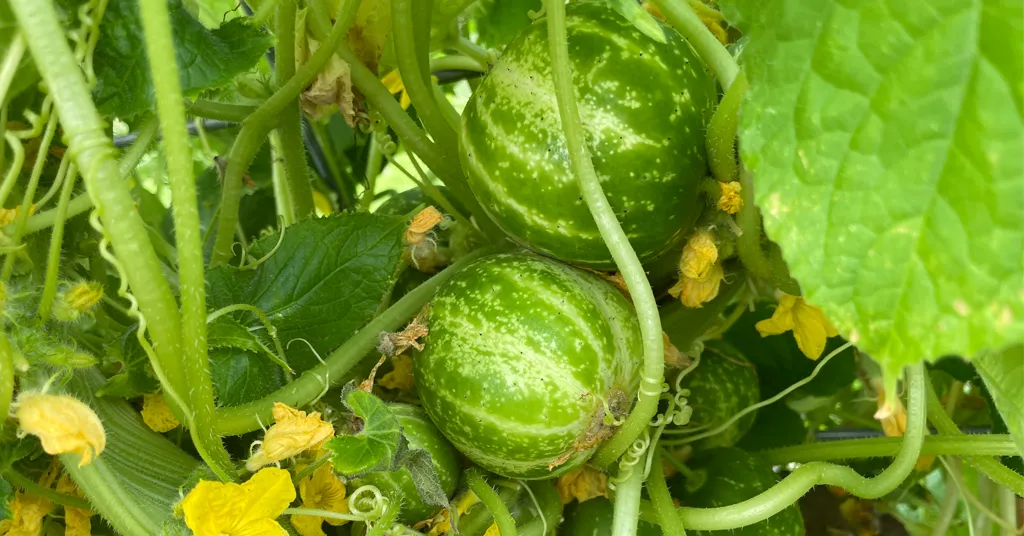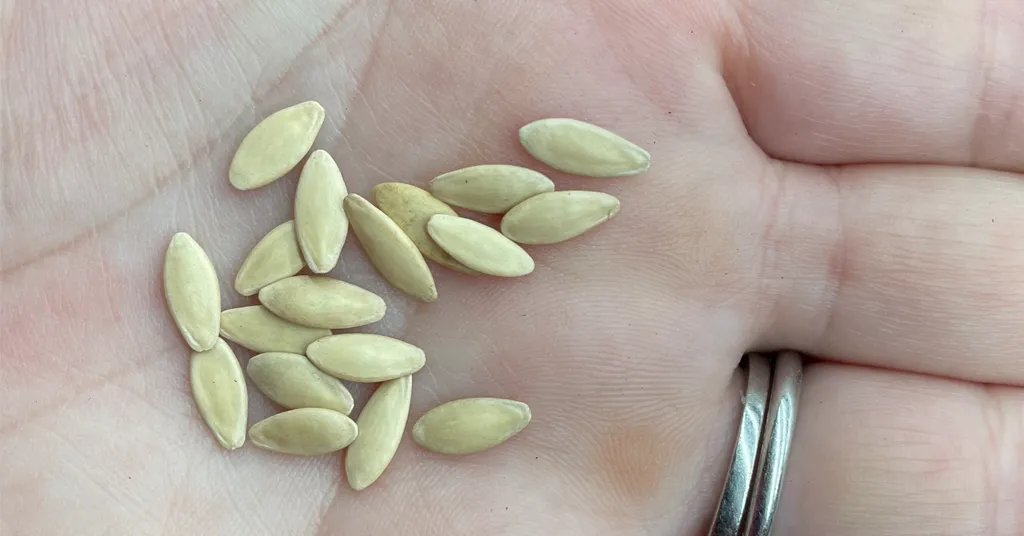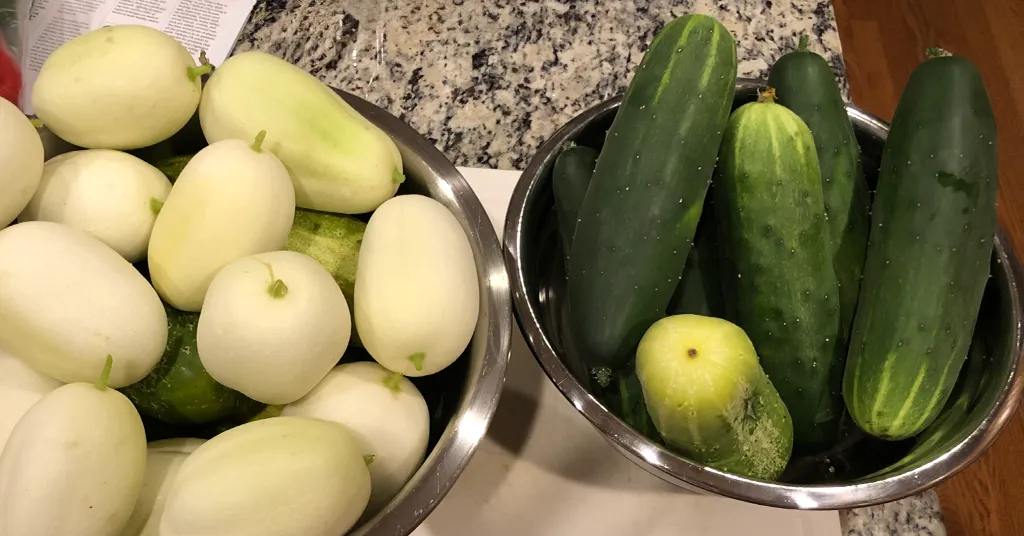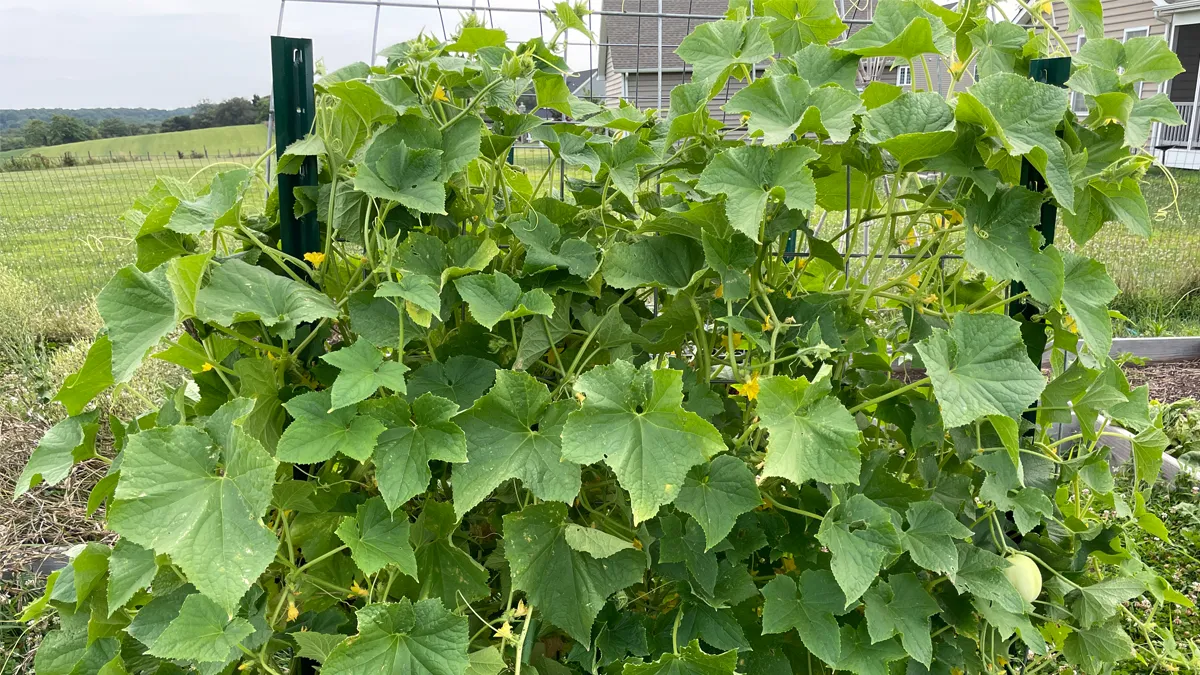This post may contain affiliate links. When you purchase through links on my site, I may earn a commission at no cost to you. See my Privacy Policy for details.
Growing cucumbers is one of my favorite things to do in the summer. They are easy to grow and everyone in my family loves to eat them. When it comes to gardening and preserving, few delights are as universally cherished as the cucumber. This versatile vegetable offers the freshest crunch in salads and the tangiest bite in pickles. It’s no wonder cucumbers have earned their place as a staple in home gardens, thanks to their versatility and ease of growth.
Growing cucumbers is a favorite among both beginner and experienced gardeners. Their appeal lies not only in their culinary uses but also in their reputation as a beginner-friendly plant.
Benefits of Growing Cucumbers
Cucumbers are an excellent choice for novice gardeners. Whether you’re just starting out with dreams of a flourishing garden or envisioning rows of vibrant produce, cucumbers will be your steadfast companions on this adventure.
Rapid Growth and Bountiful Harvests
Cucumbers are champions of rapid growth. Unlike some plants that require a long wait, cucumbers sprout in a matter of weeks. This swift growth satisfies the eager anticipation of any gardener and provides a tangible sense of accomplishment.
Cucumbers are known for their high yield potential. A single healthy cucumber plant can produce an abundance of fruit throughout its growing season. This ensures your efforts translate into plenty of fresh produce, enough to enjoy, share, and even experiment with in your preserving endeavors.
Garden Compatibility
Cucumbers adapt well to various garden sizes and styles. Whether you have a spacious backyard, a cozy balcony, or a small patch in a community garden, cucumbers can accommodate your gardening aspirations. They flourish in containers, raised beds, or traditional in-ground plots.
This adaptability means that regardless of your living situation, cucumbers will thrive and add their lush, green charm to your space.
From Crisp Salads to Tangy Pickles
Cucumbers’ appeal extends far beyond their role in the garden. Their culinary versatility makes them indispensable in the kitchen. Crisp and refreshing, cucumbers elevate salads with their delightful crunch and hydration.
Cucumbers are also key to creating homemade pickles—a rewarding process that allows you to savor your harvest well into the colder months. This versatility ensures that your cucumber crop never goes to waste.
Choosing the Right Cucumber Varieties
As you start your cucumber-growing journey, one of the first delightful choices you’ll make is selecting the perfect cucumber variety for your garden. Each variety offers its unique charm and purpose. Let’s explore some options.
Slicing Cucumbers
Slicing cucumbers are the epitome of garden-to-table freshness. With their vibrant green skin and crisp texture, they are perfect for salads, sandwiches, and snacks.
- Dragon Egg: My family favorite, these small, white, egg-shaped cucumbers boast big flavors and are ideal for snacking and salads.
- Marketmore 76: Known for its reliability and resistance to common cucumber diseases, this variety has a sweet, mild flavor that is perfect for salads and sandwiches.
- Bush Champion: Ideal for small spaces and containers, this compact variety produces a generous yield and is great for beginners.
- Straight Eight: This variety yields straight and uniform cucumbers, making it a go-to choice for fresh consumption.
Pickling Cucumbers
For those interested in pickling, pickling cucumbers are perfect for preserving your harvest in jars of tangy delight. These cucumbers are smaller and have a texture ideal for absorbing brine.
- Boston Pickling: A classic choice, this variety is known for its uniform size and crisp texture, perfect for pickling.
- National Pickling Cucumber: Renowned for its consistent size, shape, and texture, this variety is perfect for making homemade pickles.
Choosing cucumber varieties is about tailoring your harvest to your culinary desires. By selecting varieties that align with your preferences, you’re embarking on a flavorful journey from garden to kitchen.

Preparing for Growing Cucumbers
Creating an optimal environment for your cucumber plants is essential for a fruitful harvest. Here are some key aspects to consider:
Full Sun
Cucumbers thrive in full sunlight. Ensure they receive at least 6 to 8 hours of direct sunlight daily. This solar energy fuels their growth and helps them produce an abundance of fresh, crisp cucumbers.
Soil
Aim for well-draining, nutrient-rich soil with a pH level of 6.0 to 7.0. Enrich your soil with compost or well-rotted organic matter to enhance soil structure, water retention, and microbial activity.
Drainage
While cucumbers love moisture, they also need proper drainage. Elevate your planting beds, use raised beds, or mound the soil slightly to prevent waterlogging.
Mulch
Applying a layer of organic mulch, such as straw or wood chips, helps conserve soil moisture, suppress weeds, and maintain an even soil temperature.
Companion Planting
Consider planting companion plants like radishes or marigolds nearby to deter pests and improve soil health.
Planting Cucumbers
Planting cucumbers marks the moment when preparation and anticipation converge into growth. Here’s how to ensure your cucumber plants have the best start:

Plant Cucumbers After the Frost
Wait until after the last frost date to plant cucumbers. They thrive in warm temperatures, so planting them when the soil is consistently warm will help them establish strong roots and vigorous growth.
Step-by-Step Planting Process
- Direct Sowing Seeds: Create small mounds or rows in your garden bed. Plant 2-3 cucumber seeds about 1 inch deep in each mound or spaced along the row, then cover them with soil.
- Transplanting Seedlings: If starting cucumbers indoors, transplant the seedlings after the last frost date. Harden off the seedlings by gradually exposing them to outdoor conditions over a few days before planting them in your garden bed.
Watering After Planting
After planting, water thoroughly. The soil should be evenly moist but not soggy. Maintain consistent moisture when growing cucumbers, especially during flowering and fruiting stages, using soaker hoses or drip irrigation to minimize moisture on foliage and reduce disease risk.
Trellising Cucumber Plants
Trellising cucumber plants is a great way to maximize your garden space, improve air circulation, and make harvesting easier. Whether you have a small garden or a larger plot, trellising can help you grow healthier, more productive cucumber plants.
Benefits of Growing Cucumbers on a Trellis
- Space Efficiency: Trellising allows growing cucumbers vertically, freeing up ground space for other plants.
- Improved Air Circulation: Elevating the vines improves airflow, reducing the risk of fungal diseases.
- Easier Harvesting: Cucumbers hanging on a trellis are easier to spot and pick, reducing the chance of missing mature fruits.
- Cleaner Fruit: Trellised cucumbers are less likely to come into contact with soil, keeping them cleaner and reducing the risk of rot.
Types of Trellises for Cucumbers
- A-Frame Trellis: An A-frame trellis provides sturdy support and can be easily constructed using wooden beams or metal poles. It allows cucumbers to grow on both sides, maximizing space.
- Vertical Trellis: A vertical trellis can be made from a single piece of fencing, netting, or a series of stakes and strings. It’s ideal for small spaces and containers.
- Teepee Trellis: Using bamboo poles or sturdy sticks, you can create a teepee structure. This is a simple and effective way to support your cucumber vines.
How to Trellis Cucumber Plants
- Install the Trellis Early: Set up your trellis before planting to avoid disturbing the roots later. Ensure it’s securely anchored in the ground.
- Planting: Plant your cucumber seeds or seedlings about 6 inches away from the base of the trellis. This gives them room to grow towards the support.
- Training the Vines: As the cucumber plants grow, gently guide the vines towards the trellis. You can use soft ties, twine, or plant clips to secure the vines to the trellis.
- Regular Maintenance: Check your plants regularly and continue to train new growth onto the trellis. Remove any damaged or diseased leaves to keep the plants healthy.
Tips for Success
- Choose the Right Variety: Vining cucumber varieties are best suited for trellising. Look for types that specifically mention trellis compatibility.
- Water Consistently: Ensure your trellised cucumbers receive adequate water, especially at the base where the roots are.
- Fertilize Appropriately: Feed your cucumber plants with a balanced fertilizer to support their vigorous growth.
By trellising your cucumber plants, you can enjoy a more organized garden, healthier plants, and a bountiful harvest. Whether you’re a seasoned gardener or just starting out, trellising is a smart technique that can make a big difference in your cucumber-growing success.

You are well on your way to a successful cucumber harvest. Enjoy the journey from planting to picking, and savor the delicious rewards of your labor.

